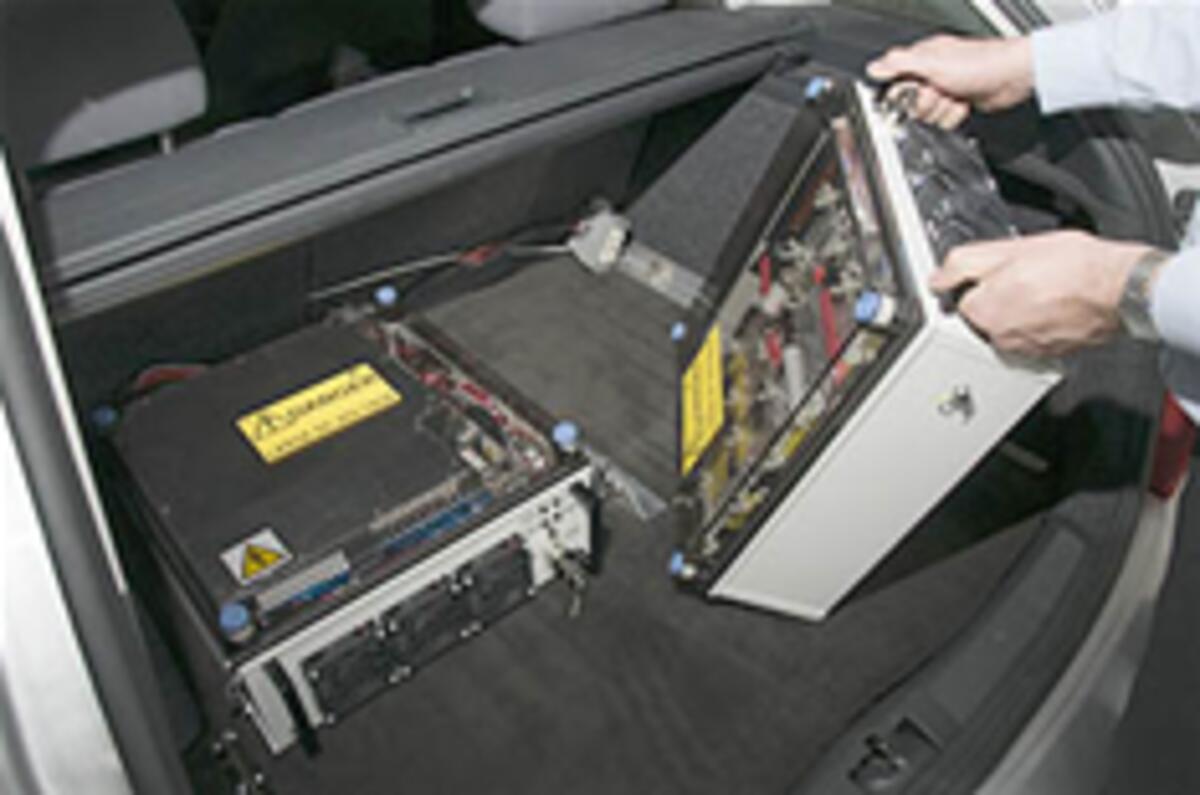Automotive designer Mira (Motor Industry Research Association) has unveiled a retro-fit hybrid conversion that can potentially cut tailpipe emissions by nearly 40 per cent and improve fuel economy by 60 per cent.The hybrid conversion system negates the need to design an entirely new car because it features a removable battery pack, arranged into three 30kW portable cassettes, that essentially upgrades existing vehicles to hybrids.The technology demonstrator has been built around a Skoda Fabia as a plug-in hybrid. The vehicle can charge its batteries using the petrol engine or by removing the battery pack and charging it through the mains.Mira claims the test model returns 64mpg on the combined EU cycle, while its top speed and acceleration are similar to a standard Fabia’s.Derek Charters, Mira’s advanced powertrain manager, said, “Despite advances in powertrain technology you can still obtain electricity from your domestic provider far cheaper and greener than you can produce it via an automotive combustion engine, so ‘plug-in’ hybrids make sense.“With this project we’ve removed the primary limitation of the ‘plug-in hybrid’ concept by allowing the battery pack to come to the mains, rather than having to park right next to a socket, which is more than a little difficult if you live in a terraced house or flat.”The engineers are aiming to see if the power pack can be transferred from the car into other motorised devices such as jet skis or quad bikes.Unfortunately, Mira has said that the system is not about to go into full production, so you won’t be able to escape the congestion charge in your Porsche Cayenne Turbo just yet.
Mira has developed a portable hybrid system that cuts exhaust emissions and improves fuel economy
Close
Join our WhatsApp community and be the first to read about the latest news and reviews wowing the car world. Our community is the best, easiest and most direct place to tap into the minds of Autocar, and if you join you’ll also be treated to unique WhatsApp content. You can leave at any time after joining - check our full privacy policy here.





Join the debate
Add your comment
Re: Mira showcases retro-fit hybrid
An interesting concept. Shame you didn't tell us anything about the power unit itself. I presume it's a starter/generator replacement for the alternator, as hub motors, a new axle or a sandwich motor would have to be bespoke to the car.
A new starter/generator will surely create a few (probably very costly to overcome) obstacles regarding the strength of mountings/pulleys etc, let alone the difficulties of making a one-size-fits -all system control unit which results in smooth and efficient progress.
The part you've described, the battery pack and charger, is surely the easiest part of any system to engineer. Anyone with an ounce of electronics knowledge could knock one up in a garage using a pile of shop-bought Lithium iron batteries and a switch mode power supply. Come on Autocar, get a decent reporter in there.